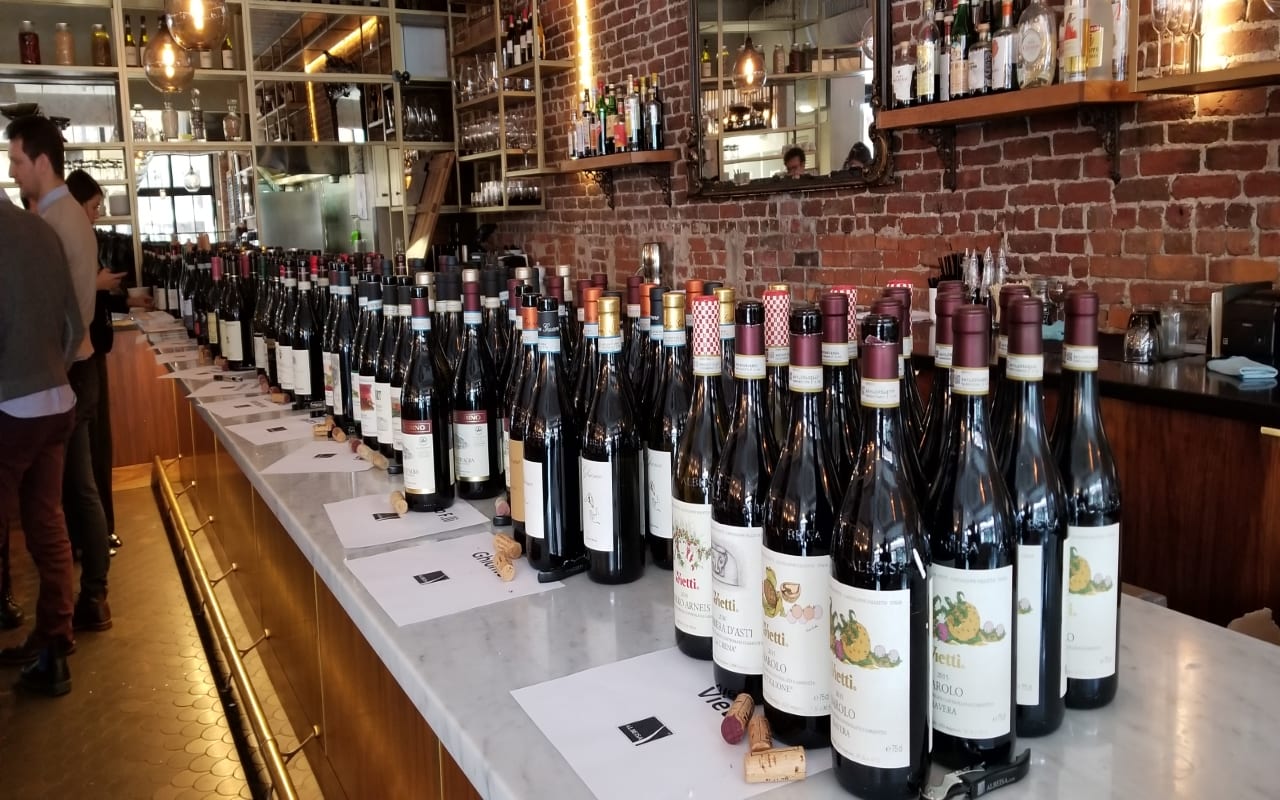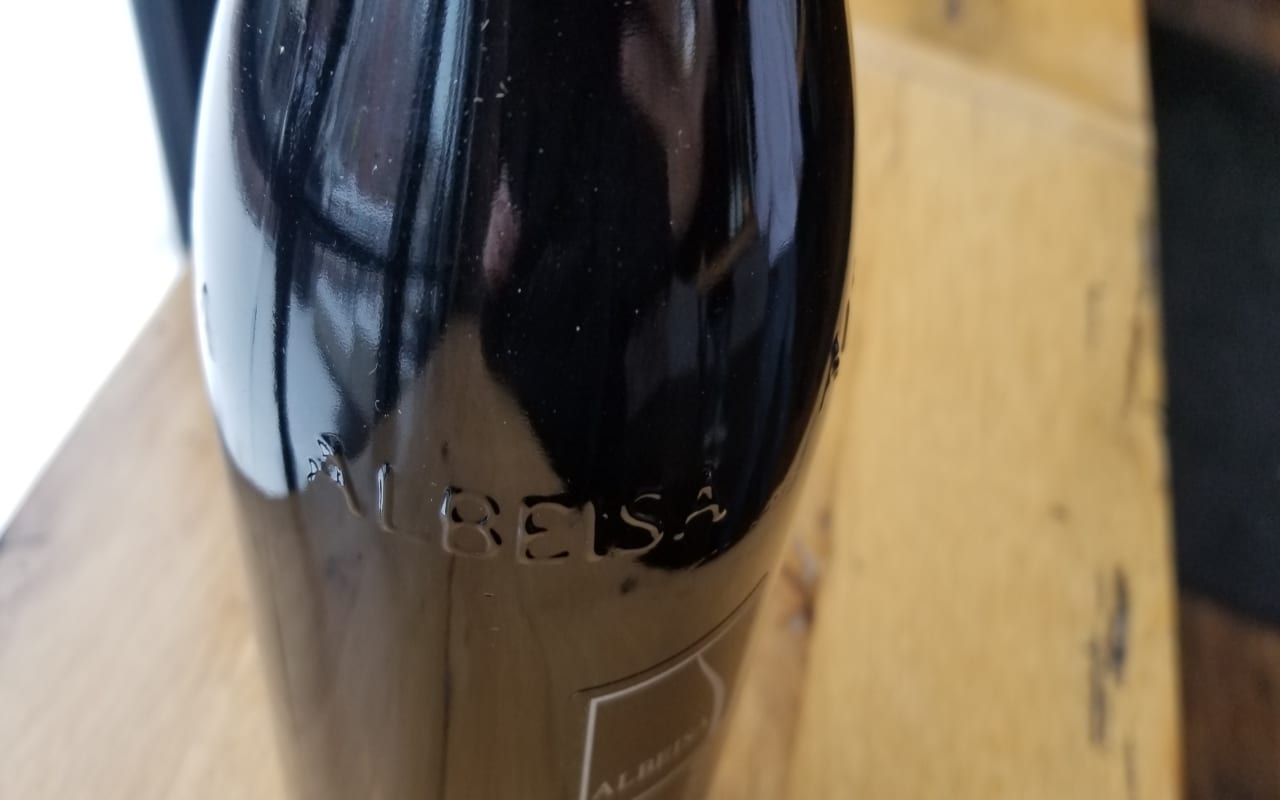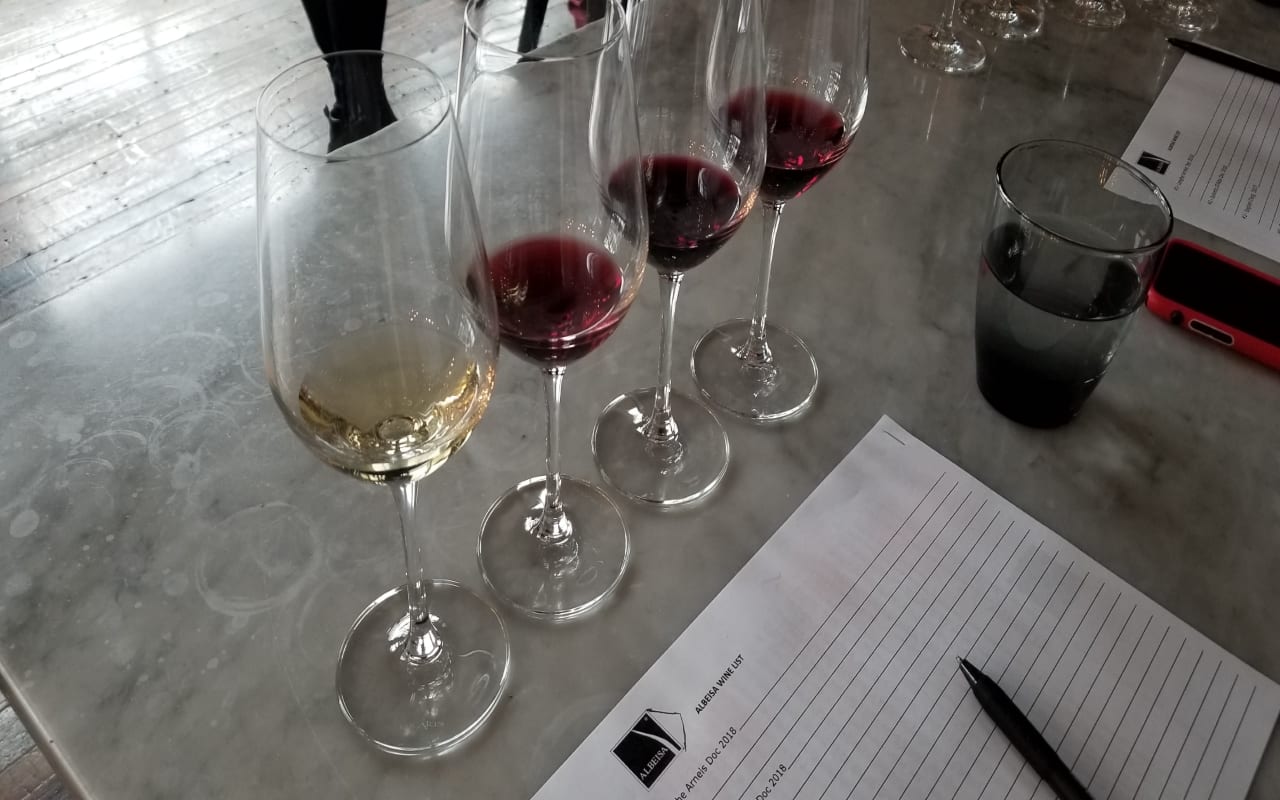
31 Dec Albeisa – A story in a bottle
When you look at a soft shoulder bottle of wine, you can identify it as a Burgundy bottle and find Pinot Noir or Chardonnay inside. If you see a tall shoulder bottle, it is recognized as a Bordeaux bottle and we find Cabernet Sauvignon, Merlot, Cabernet Franc, Petit Verdot, Malbec, Sauvignon Blanc and Semillon in those. Then there is the Albeisa bottle that has its own unique shape, between the Burgundy and Bordeaux bottle. And, it has the name “Albeisa” embossed around it. This name is a symbol, it is more than the bottle but what is in the bottle. It is about a place and people. I wrote about the story of the Albeisa bottle in the Napa Valley Register and share it here.
To speak of the wines of Piemonte, Italy, little more needs to be said than Barolo and Barbaresco. The prestige of those two areas, as well as the entire region of the Langhe, is known by wine lovers around the world.
But have you ever looked closely at a bottle of Nebbiolo, Barbera, Dolcetto, or Arneis and seen the embossed words “Albeisa” printed around the shoulder of the bottle? Have you wondered why it is written on the bottle? Do you know the meaning of that word? The Albeisa bottle is a distinct element that symbolizes a region, a people, a tradition, and more.
Albeisa, officially called the Unione Produttori Vini Albesi, is a non-profit organization established in 1973. The association was founded by Renato Ratti and 15 other producers in the Langhe, which covers Barolo, Barbaresco, Roero, Dogliani, and Alba and includes seven DOCGs and seven DOCs.
To recognize a member of the Albeisa Association, just look at the bottle. The Albeisa bottle was born in the 1700s and is one of the oldest bottles of Europe.
Launched by local producers who wanted to distinguish the wines from other wines, the bottle was fashioned by ancient master glassblowers. The bottle is a unique shape that is between a Bordeaux bottle and a Burgundy bottle. The “shoulder” of the bottle is a bit more pronounced and the word “Albeisa” is embossed along the circumference of the bottle shoulder. In the early 18th century, the heavy bottles were made by hand and they disappeared from production between 1750 and 1850.
When the Albeisa Association was founded in 1973, they reintroduced the Albeisa bottle. This bottle can be used only by its members and to be a member, there are specific criteria including:
1) All members are vetted before being allowed into the association.
2) Only producers with facilities within the Langhe can be admitted.
3) Only wines from vineyards cultivated within the Langhe can bottle with the Albeisa bottle.
4) Only Veralia is allowed to produce the bottle.
5) Producers must use it for at least one wine and for one year.
Today, Albeisa is more than the unique bottle. The Albeisa Association is focused on protecting the environment and raising consciousness under Planet Albeisa. Beginning in 2007, the glass used for the bottle, which is much stronger today than it was in the 18th century, is 22 percent lighter (by 125 grams) than the traditional glass bottle. This, in turn, is better with regards to glass’s environmental impact.
Land is also very important to Albeisa. In 2013, “Albeisa Woods” was born in which the association planted trees in the burned forests of Kenya. They have planted over 4,000 tall trees, providing work and sustenance to the local population that had been suffering from socio-economic problems aggravated by uncontrolled deforestation.
And, for a more local project, over the last 30 years, Albeisa has planted old varieties of trees in the Langhe to help increase the growth of truffles. Each year, Albeisa looks for more ways they can invest back into the community.
Using the Albeisa bottle represents an identity. It is not just a bottle. It is not just wine. It honors a people, a place, and a passion. Being a member of the association is a choice and craftmanship is a central tenant. The wineries have chosen to work together to promote the Langhe and more than 17 million bottles have been produced in the Albeisa bottle.
Next time you are shopping for wine, in addition to Barolo and Barbaresco, look for one of these wines with the Albeisa bottle:
Langhe Arneis
Derived name from Rnexij, the ancient name of the locality Renesio di Canale, it is Piemontese dialect for “rascally person.” Arneis was resurrected in the 1960s by Alfredo Currado of Vietti and the key traits are a straw green color, aromas of white flowers, stone fruit, and almond, and fresh and vibrant with great acidity on the palate.
Dolcetto d’Alba
If you are a fan of Beaujolais, put a chill on Dolcetto and you will find a similar wine, although more tannic. A challenging grape variety to grow, Dolcetto has fragile buds, poor vigor and ripens early. It is also highly reductive and hard to manage the tannins. Primary characteristics of Dolcetto are high tannins, low acidity and dark fruit aromas.
Dogliani DOCG
Established as a DOC in 1974 and then a DOCG in 2005, Dogliani wines are 100 percent Dolcetto. Grown in calcareous-clay and sandy-calcareous soils, the 100% Dolcetto Dogliani wine is fresh with perfumed floral notes and bigger tannins than Dolcetto d’Alba.
Barbera d’Alba
One of the most important grapes in Italy, the first written account of Barbera was in 1246. A grape that is high in acid and low in tannins, it loves heat. There are 1,598 hectares of Barbera d’Alba planted that encompass all of Barolo, Barbaresco, and Roero.
Langhe Nebbiolo
First recorded as “Nibiol” in 1268, Langhe Nebbiolo is part of the greater DOC/DOP of Langhe, and also includes vineyards within the province of Cuneo. There is a minimum requirement of 85 percent of Nebbiolo required for varietal labeling. The resulting wine typically has notes of roses, violets and cinnamon.
Roero
Roero is to the area north of Alba and on the left bank of the Tanaro River. The soils differ from other areas in the Langhe as there is a higher proportion of sand, resulting in a wine with floral and spice aromas. Roero red must be made with 95 percent Nebbiolo and five percent non-aromatic red grapes from Piemonte. Roero Classico is aged for 20 months, with six months in wood and Roero Riserva is aged for 32 months in wood).
Moscato d’Asti
Moscato is thought to be one of the oldest grapes in all of Piemonte; the Moscato d’Asti DOC was established in 1967, and the DOCG was established in 1993. There are three subzones of Moscato d’Asti: Caneli, Strevi and Santa Vittoria d’Alba and Moscato d’Asti cannot exceed 2.5 ATM (standard atmosphere) or 5.5 percent alcohol by volume. Mostcato d’Asti has sweet aromas of peach, orange blossoms, and citrus and bright acidity on the palate.
Read the original story in the Napa Valley Register.
Discover more from Please The Palate
Subscribe to get the latest posts sent to your email.






